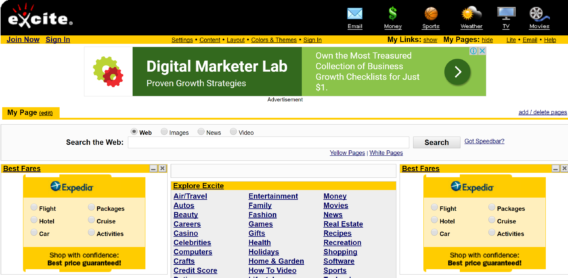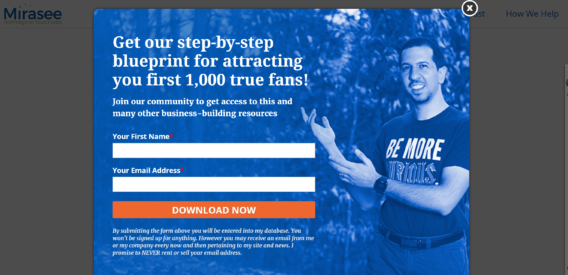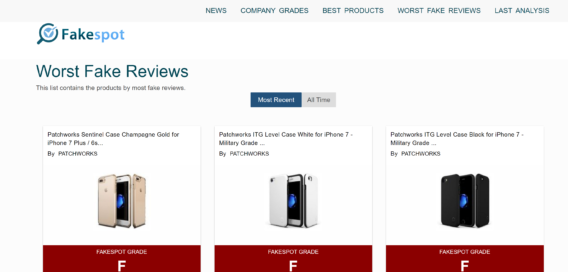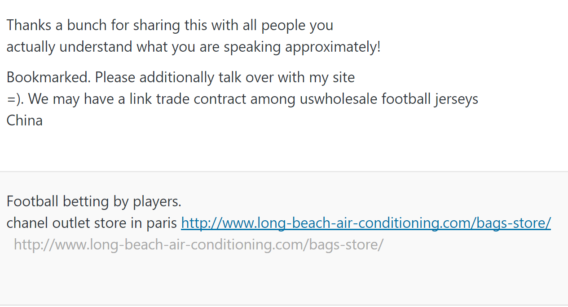Are you worried that your marketing isn’t resonating with your target audience? It could be a question of trust.
No matter what message we think we’re sending, it’s consumers’ opinions that count. It doesn’t take much for them to hit the spam button in their email client or leave your site forever.
In this article, you’ll learn the spammy marketing practices that kill trust and conversions so you can avoid them. That’ll help you build a relationship of trust with your customers and improve the conversion rate for your marketing.
Why Trust is Important in Marketing
In marketing, trust is everything. In fact, as a recent Entrepreneur article said, it’s “the new marketing currency”. There’s a strong link between trust and conversions, with trust factors proven to boost sales.
That’s why, as a marketer, you’re looking to build a relationship with your customers, so that they stay with you for the long term.
But it’s also easy for the opposite to happen. Spammy marketing practices can make your business seem untrustworthy and drive potential customers away forever.
Surprisingly, there are still people out there using marketing tactics that have the opposite effect to what’s intended. Here are some of the bad marketing practices we’ve seen.
Spammy Websites
Let’s start with websites because these are some of the main places where people look for information about your business. Ever visited a website and found yourself itching to hit the back button? We have too.
There are some website features that just don’t inspire trust. Things like:
1. Cluttered Design
If your web page is too cluttered, it looks like a throwback to the 90s. As the image below shows, even good 90s websites weren’t pretty, so this is definitely a mistake to avoid.

Not only do cluttered web pages look terrible, but they’re also hard to use. And if people can’t find what they want quickly, they’ll just leave. When creating your website, check out the latest design trends for inspiration.
2. Autoplaying Media
A major online annoyance is media that plays automatically. We’ve all been surprised by the sound of an audio or video clip – or, even worse, a Flash animation – when we visit certain sites.
Though social media autoplay is now a thing, a lot of people don’t like it and are looking for ways to turn it off. It’s much better to give people the choice if you want to win their trust.
3. Marketing That Covers Content
Another annoying marketing practice is covering content with marketing info you can’t get rid of. We’re not talking about popups, which you can close with a click. We’re talking about information that covers the content you’re trying to read and just won’t go away.
There are better ways to put your offer in front of web visitors. If they’re new, use rules to make sure they have enough time to view content before you start marketing. If they’ve been to your site before, you could hide the offers they don’t need to see.
Oh, and if you’re running ads, keep those from covering the content, too. We’ve seen ads on some sites that cover the submit button on email forms, which means people can’t sign up, even if they want to.
4. Poor Navigation
When people visit your site, they need to find their way around easily. Navigation affects both trust and conversions, so stay away from unhelpful labels, cluttered navigation bars and putting items in the wrong order.
Also, make sure people can get back to the homepage easily from wherever they are. It’s amazing how many sites forget this.
5. Terrible Typography
According to the Litmus 2017 State of Email report, 51% of people unsubscribe from emails because they don’t look good on their smartphones. So, think about what they’ll do if your whole site doesn’t look good. Besides being cluttered, the example below also uses a gazillion different fonts, which is a design no-no.
In this mobile era, you need to use large fonts the show up crisply on smartphone screens. And don’t use too many fonts on your site, either. This also makes it look kind of spammy.
6. Bad Text/Image Ratio
While we’re talking about text, web pages that are a mass of densely-packed text aren’t just unattractive; they’re not user-friendly either. Ignoring user experience is one hallmark of spammy websites.
Break your text up with images, but don’t go overboard. Sites with lots of images and not enough text look short on content and, you guessed it, spammy. Too many images also slow down your site, which is bad for SEO.
7. Broken Links
There’s a clear link between trust and conversions, and one thing that breaks trust is broken links. These just cause frustration and the only action frustrated visitors take is to leave. If you’re running a WordPress-based site, it’s easy to find and fix those broken links.
8. Missing Contact Info
Another trust breaker is when you visit a site and have no idea who’s behind it. If you’re even the slightest bit paranoid, you’ll wonder why the site owner’s hiding. To solve this, consider:
- Using images of real people from the company on your site.
- Including contact details that go beyond the contact form, like an address and phone number.
- Adding social media links, so people can check you out there.
For example, the “who we are” page for the Santa Catalina school includes a photo of the head of the school and contact details in the footer of the page.
The more real you are, the better it is for website conversions.
9. Poor Content
It’s really disappointing when you follow a link to a website expecting great content and end up with something blah.
Content that doesn’t deliver on the promise of your call to action hurts conversions. It’s also pretty hard to get someone back after they’ve decided they hate your content.
The solution: build a great content marketing strategy to ensure your site appeals to your target market.
Spammy Marketing
Now let’s look at some of the marketing tactics people use that break web users’ trust.
10. Unoptimized Popups and Overlays
As you’d expect, the OptinMonster team loves popups, but we’ve got to admit that sometimes they way they’re implemented can suck. That goes for welcome gates and slide-ins, too.
If those optins appear all the time to both new and returning visitors, and no matter whether they’ve already signed up, then you can’t blame people for getting annoyed.
Cut the spam factor – and the annoyance factor – by using rules, or use exit-intent technology to get their attention as they leave your site, as Danny Iny does below.
11. Complicated Signup Processes
When you’re thinking about growing your business, it’s tempting to collect as much information as you can from potential customers.
There’s only one problem with that: short forms convert better. The more complex it is for people to sign up or opt-in, the less likely they are to do it.
The solution? Keep forms short or use a multi-page form instead.
12. Asking for Registration Too Soon
You know what else is annoying? Asking people to register for your site before they’ve had a chance to look around.
It’s much better to let them browse and then use page-level targeting to provide an offer related to what they’re interested in. If you offer something of value, that will build trust AND conversions.
13. Fake Reviews
Sometimes the reviews on certain websites look too good to be true.
That’s because they are.
Sure, social proof is important, but only if it’s REAL social proof.
Since fake reviews are easy to identify, especially with the Fakespot tool, shown below, focus on getting real reviews for your site to avoid this spammy marketing practice.
Get real social proof for your site using one of these awesome social proof tools (we HIGHLY recommend TrustPulse).
Related ContentSocial Proof Statistics: Powerful Facts That Will Help You Boost Your Brand
14. Freebies That Cost
Ever signed up for something marketed as free, only to find that the information you really needed had a cost attached? The “non-free freebie” is shady marketing at its worst. A freebie should be free; no exceptions!
Trying to fool customers always backfires, so use that freebie lead magnet to sell them on your value instead.
Spammy Mobile Marketing
Mobile devices have given marketers a way to connect with their customers. Unfortunately, that also means there are new ways to spam them, which reputable marketers will want to avoid.
15. No Mobile Version
In 2016, more than 36 million Americans used mobile devices exclusively for web access. Worldwide, 15% of the web population only use mobile devices to access the internet. That means it’s long past time to have a mobile version of your website. It doesn’t look like this site got the memo; this is a screenshot taken on a smartphone:
If your site doesn’t work on mobile, mobile device users will leave – fast – and they probably won’t come back. After all, if a site doesn’t care about what works for them, why should they trust the people behind it?
16. Unwanted Messaging
Every site you visit these days wants to send you notifications. At least, you usually have the chance to opt-out, but that’s not always the case with apps.
The thing is, just because you visit a site or sign up for an app, it doesn’t mean you want to be bombarded by push messaging. And just because you’ve given a company your phone number, it doesn’t mean they should add you to their SMS list.
Get too pushy with the messages and people will be quick to uninstall your app or leave your site. So, as with email marketing, ask permission first.
17. Too Many Interruptions
We get it: you want to know what mobile users think of your website or app. But you’ve got to give them a chance to experience it before you ask for a review or push an upgrade.
For the best user experience, give people time to get to know your product, and as we mentioned earlier, use rules to stop mobile popups from interrupting users too early.
While we’re on the subject, Google has clamped down on interstitials that cover content. Check out our advice on making sure your mobile popups are user-friendly and compliant.
Spammy Emails
We’ve written a lot about email marketing here on the OptinMonster blog, so you’ve probably heard us mention a few of these spammy email marketing practices before:
18. Buying Lists
We’ve said before that buying email lists is a really bad idea. Not only will you come across as a spammer, but you could be sending emails to the same list as a gazillion other companies. Plus, your email marketing provider won’t be very happy. Building your own list is a much better idea.
19. Unsolicited Emails
Related to that, unsolicited emails are another hallmark of spammy marketing. We’ve seen people add subscribers who opted into one list to another list, without their permission.
That’s a no-no: get them to opt-in instead. As Haden Media says: “Spam is about consent; not content.”
20. Missing Unsubscribe Link
Related to that, some people still send emails where it’s hard to find the unsubscribe link, or it isn’t there at all. We get that you don’t want people to unsubscribe, but sometimes it happens, and it’s good practice to make it easy as WPForms does:
21. No Identifiable Sender
Most email marketing providers prompt you to add sender information to your emails. You should have an email address people can reply to, and a mailing address is helpful, too.
It’s also important for people to know who’s sending the email, whether that’s a person who represents your business, or just the company itself. A header image including your logo is a good start to make people feel more comfortable.
22. Lack of Personalization
According to McKinsey, personalization is the new holy grail of marketing and it goes beyond simply putting someone’s name in an email, though that’s a start.
Email recipients, like all your customers, want to feel they have a personal relationship with you. Tailoring your emails to their interactions with you will increase both trust and conversions.
Use OptinMonster’s Smart Tags feature to start personalizing from the moment people interact with your site.
23. Looking Like Spam
When crafting your emails, there are a few tactics that don’t just damage trust and conversions, they damage deliverability. These include:
- Subject lines in all caps.
- Too many exclamation marks.
- Using spam filter trigger words.
Avoid these if you want subscribers to trust you.
The fix for spammy emails: Pay attention to the CAN-SPAM Act, or whatever regulations govern email spam where your recipients are. And check out our beginner’s guide to email marketing to start your email marketing strategy the right way.
Spammy Link Building
Links are a key SEO ranking factor, but only if you build high-quality links. Spammy link building practices won’t help businesses earn their customers’ trust. These include:
24. Hidden Links
Some sites hide links using code or simply by making them the same color as the background of the web page. That’s an old trick spammers use, and it’s very shady. Any linking should be out in the open, so people know exactly what you’re linking to.
25. Links from Bad Neighborhoods
Similarly, getting inbound links from shady sites won’t do you any favors. Your link building strategy has to focus on earning links from reputable sources. If someone links to you that your customers trust, then you benefit from that trust.
26. Comment Spam
Anyone who’s ever run a blog knows about comment spam. Those are the comments that are nothing more than an excuse to drop a link. Some are short, some are long; all are unwelcome black hat SEO tactics. Make sure anyone helping with your outreach strategy stays away from this shady strategy.
27. Low-Quality Guest Blogging
Guest blogging can be an excellent link building technique, but you have to be careful about how and where you do it. If you choose the wrong blogs or the wrong topics, then you won’t get the benefit of high quality, relevant inbound links, which is kind of the whole point.
Check out our guide to typical guest blogging mistakes so you can get your strategy right.
28. Poor Linking
There’s no getting away from it; link schemes are bad. Google’s been cracking down on them for years, but somehow, they still live on, in the form of:
- Sitewide links
- Paid links
- Link schemes
Those kinds of links can result in negative SEO, which means potential customers won’t even be able to find you, let alone trust you. Check your site by using a tool like Ahrefs or Moz to assess the quality of your inbound links.
Spammy Social Media
Social media’s not exempt from spammy marketing practices. Here are a couple of things that make it hard for followers to trust you.
29. Spammy Follow-up
When people connect with you on social media, how do you respond? We’ve seen people on sites as varied as Twitter and LinkedIn respond with an immediate call for new followers to sign up for a resource or even buy a product or service.
In our view, that’s the quickest way to kill a budding relationship. It’s far better to focus on being helpful and human if you want to build trust.
30. Untargeted Social Ads
If you’re going to use ads to connect with your customers, make sure they’re relevant. Otherwise, they won’t pay attention to them at all. As we mentioned earlier, online consumers are looking for a personal experience, and that extends to the ads they see.
Use the targeting features on most social sites to make sure you’re putting your promotions in front of the right audience. Here’s our guide to running high converting ads on Facebook as a starting point.
Now you know some of the main spammy marketing practices to avoid if you want to improve trust and conversions from your website, mobile marketing, email marketing, and social media marketing.
See our guide to understanding your user to create a marketing strategy that makes customers trust you. And follow us on Twitter and Facebook for more free guides.




















Add a Comment